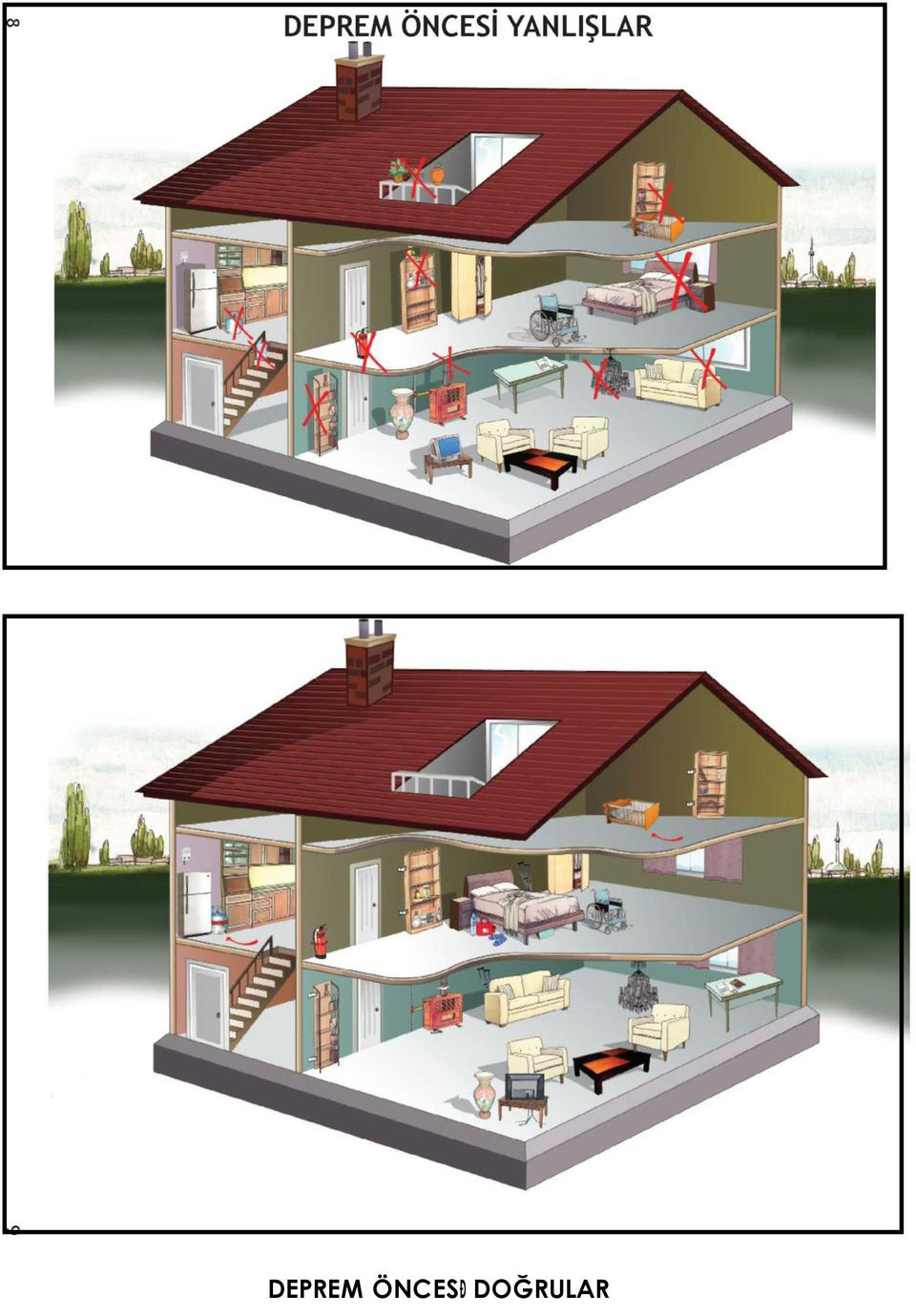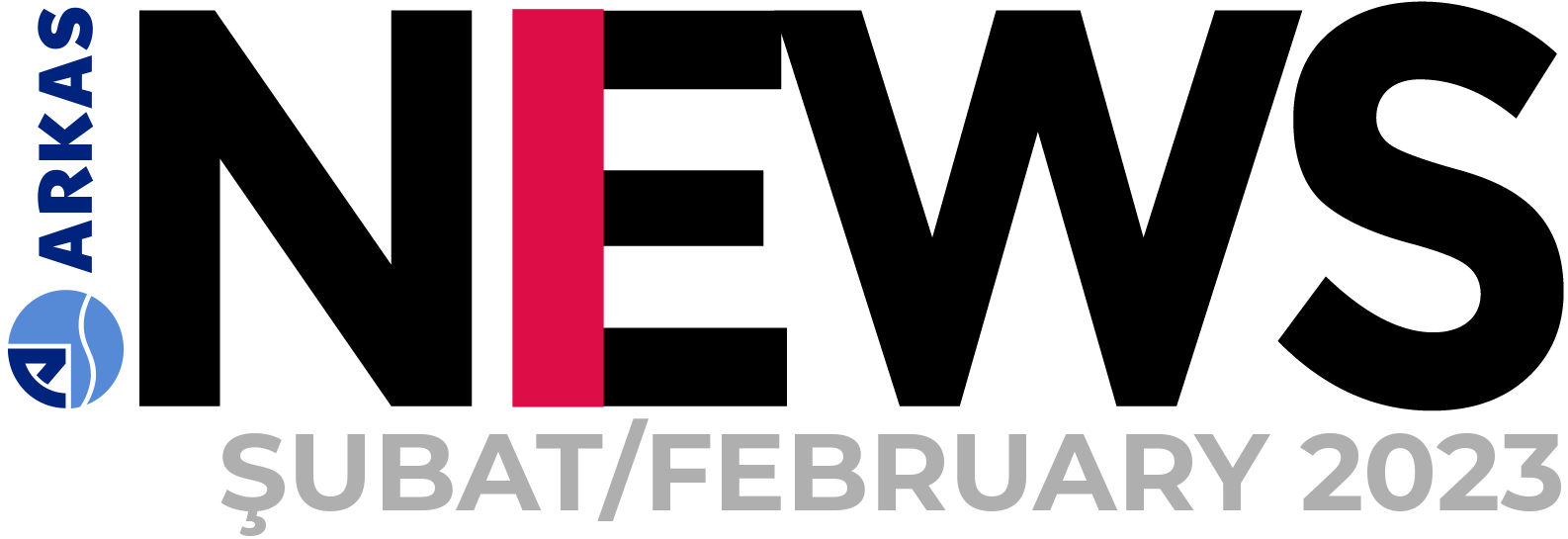Türkiye is trying to recover from the earthquakes that struck on February 06. In an unprecedented succession, a 7.7 magnitude earthquake in the Pazarcik district of Kahramanmaras at 04:17 was followed by a 7.6 magnitude earthquake occurred in Elbistan district at 13:24. Two separate earthquakes, which were felt intensely in neighboring provinces, especially Hatay, Osmaniye, Adiyaman, Gaziantep, Sanliurfa, Diyarbakir, Malatya and Adana, caused great destruction. As the aftershocks continue in the region, the issue of what citizens should do during and after an earthquake remains on the agenda. Geologists, on the other hand, recommend demolishing unsafe structures and rebuilding or retrofitting them. Geoscientists point out that loss of life can be prevented by taking advance precautions in risky areas.
What to do Before an Earthquake?
Experts advise citizens to have their homes checked for earthquake safety. Those who can afford it should demolish and rebuild if the building is unsafe. Another way is to reinforce a house. The safety of the ground on which the house will be built is also important and needs to be prioritized so that a construction can be built on a safe ground structure.
What to do During an Earthquake?
Experts say that the general group of actions to take during an earthquake is the “Drop Down/Cover Head/Hold On” sequence. According to the Earthquake Training Manual prepared by the Search and Rescue Association (AKUT), the first thing to do should be to lie down or collapse to a safe place, as it is not possible to stand, especially in stronger earthquakes. Examples of safe places are right next to items such as sofas, sturdy tables, beds, washing machines, etc. that will not collapse to ground level even if something collapses on them, which therefore can create a small living space where the person can get oxygen in case the building collapses. AKUT describes the “Lie Down/Kneel-Protect self/Cover-Hold” movement as follows:
Lie Down: Lying face down on the floor, or lying on the side with the legs pulled to the abdomen (fetal).
Kneel: This is especially applied when places such as under the table are preferred. The body leans forward by getting down on both knees.
Protect self/Cover: This refers to the state of protecting ourselves against objects that may fall or topple over from our surroundings during an earthquake.
Protect self: Protection of the head area in particular is a top priority, such as “protecting” the head with a pillow or other object.
Close body: This means to close body with our heads in our arms.
Hold: You can hold on to heavy and large objects, such as armchairs and sofas, that are swaying during an earthquake, so that you can swing with them and prevent them from crushing you.

Dangerous Locations
Door thresholds are among the dangerous places to be avoided during an earthquake. In addition, balconies, stairwells and elevators should never be used during an earthquake. Experts also recommend that large items such as cabinets, wardrobes and sideboards that can cause injuries when tipped over should be fixed to the wall.
What to do After an Earthquake?
In a series of videos on earthquakes, the Disaster and Emergency Management Presidency (AFAD) lists what to do after an earthquake:
Leave the building after making sure of the safety of your surroundings and yourself.
Turn off electricity, gas and water valves, turn off stoves and heaters.
Take your disaster and emergency bag and go to your gathering area.
Try to support infants, children, elderly, disabled and pregnant women who may need help after the earthquake.
The booklet prepared by Bogazici University’s Kandilli Observatory also warns that in the event of a tsunami risk, people should flee to higher ground, not towards the sea.
What Should be in an Earthquake Bag?
Experts and organizations working on disasters advise individuals to prepare a bag or kit containing supplies to meet their fundamental needs. The materials that AKUT recommends to be in the earthquake kit called “Emergency Kit – 72-Hour Sufficiency Kit” are as follows:
Water
Durable food (canned food, etc.)
First Aid Kit (sold in pharmacies)
Battery radio and spare batteries
Flashlight (with spare batteries and bulbs)
Blanket
Cash
Match / lighter
Pen, paper
Whistle
Sanitary pads etc.


Insurance policies, bonds, stocks, shares, contracts, promissory notes, etc.
Passports, insurance cards, medical records, etc.
Inventory of valuable household items, important phone numbers.
Families with babies are also advised to take with them products such as formula, diapers, bottles and spare clothes. This earthquake bag should be kept within easy reach of everyone living in the house.
Vital Apps During an Earthquake
The applications that are vital to have on cell phones are as follows:
Whistle: It makes a loud siren sound and starts turning the flash on and off. This way, you can be recognized under a dent and someone will find you.
Bridgefy: It allows you to communicate with people nearby via Bluetooth without WiFi or a network signal.
Life360 Family Location: Using the GPS feature, it allows you to be location-based aware of the status of your family and loved ones in the event of an earthquake. You can communicate with your family using the groups created within the app. An emergency button allows you to send messages and ask for help in times of need.

Signal Offline: It allows you to communicate one-to-one or in groups from up to 100 meters of distance without internet or local network. The short signal can send voice, text, photo and video messages to users around you directly over Wi-Fi.
Akut Guvendeyim (I’m Safe): In case of natural disasters such as earthquakes, this application sends your information to the people you have predetermined via text message and informs you that you are safe. Through the app’s menu, you can also access certain basic information about what to do in the event of a natural disaster. You don’t even need the internet to use “Guvendeyim”; in case of a natural disaster, you can simply press a single button and your location will be shared with the people you specify.


